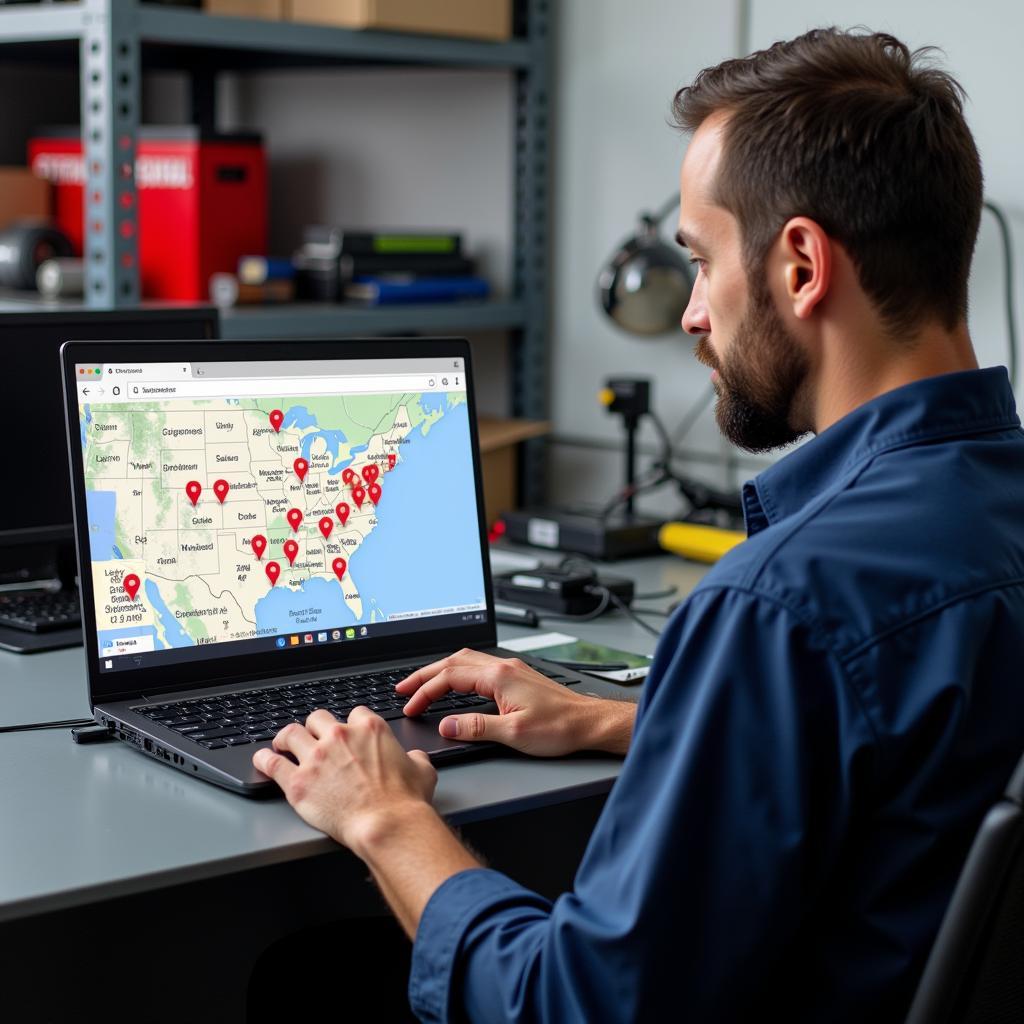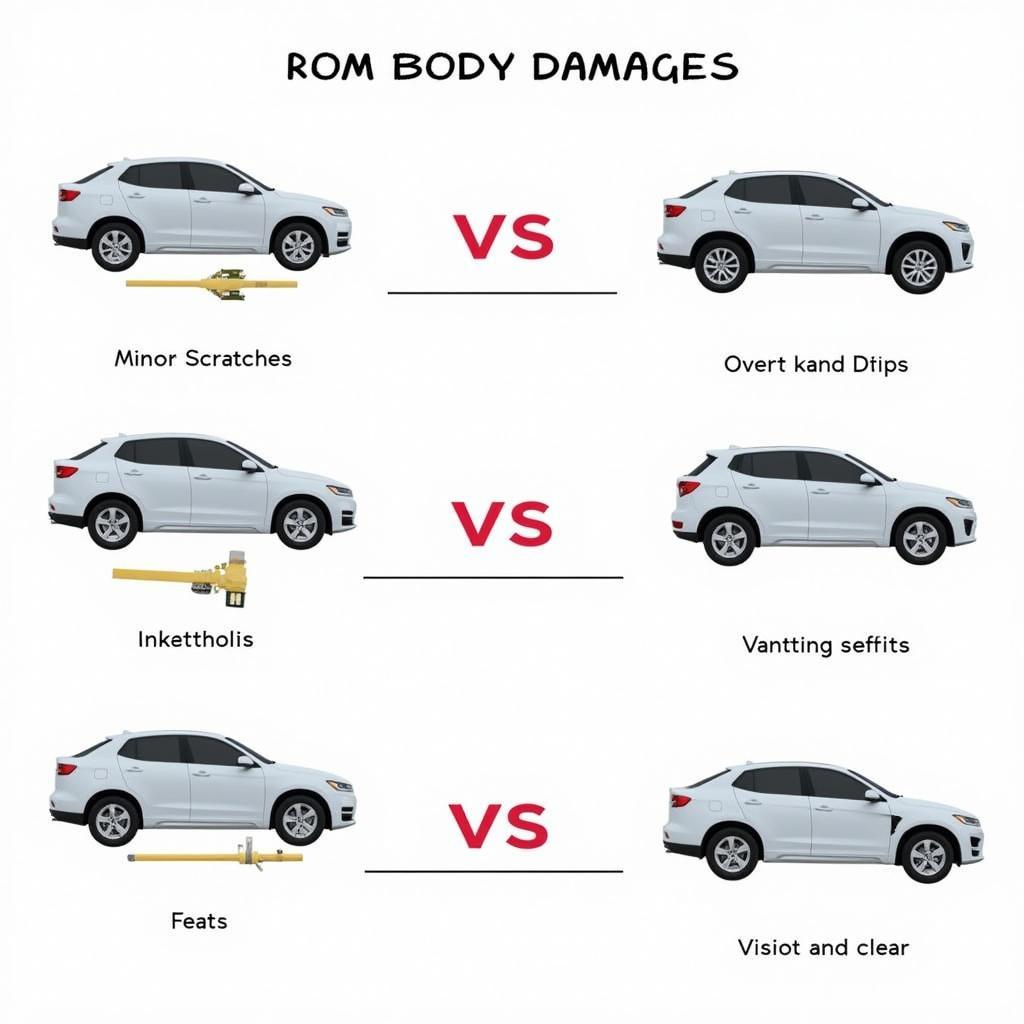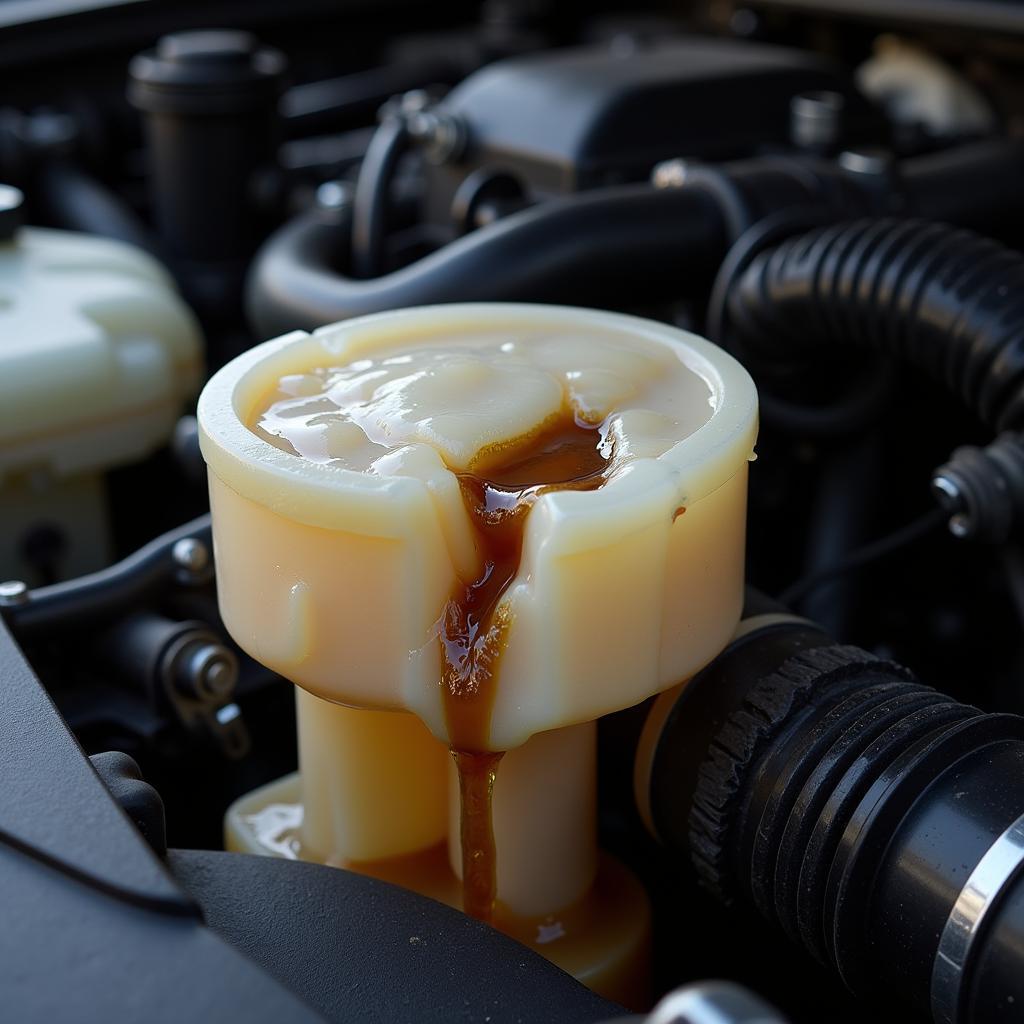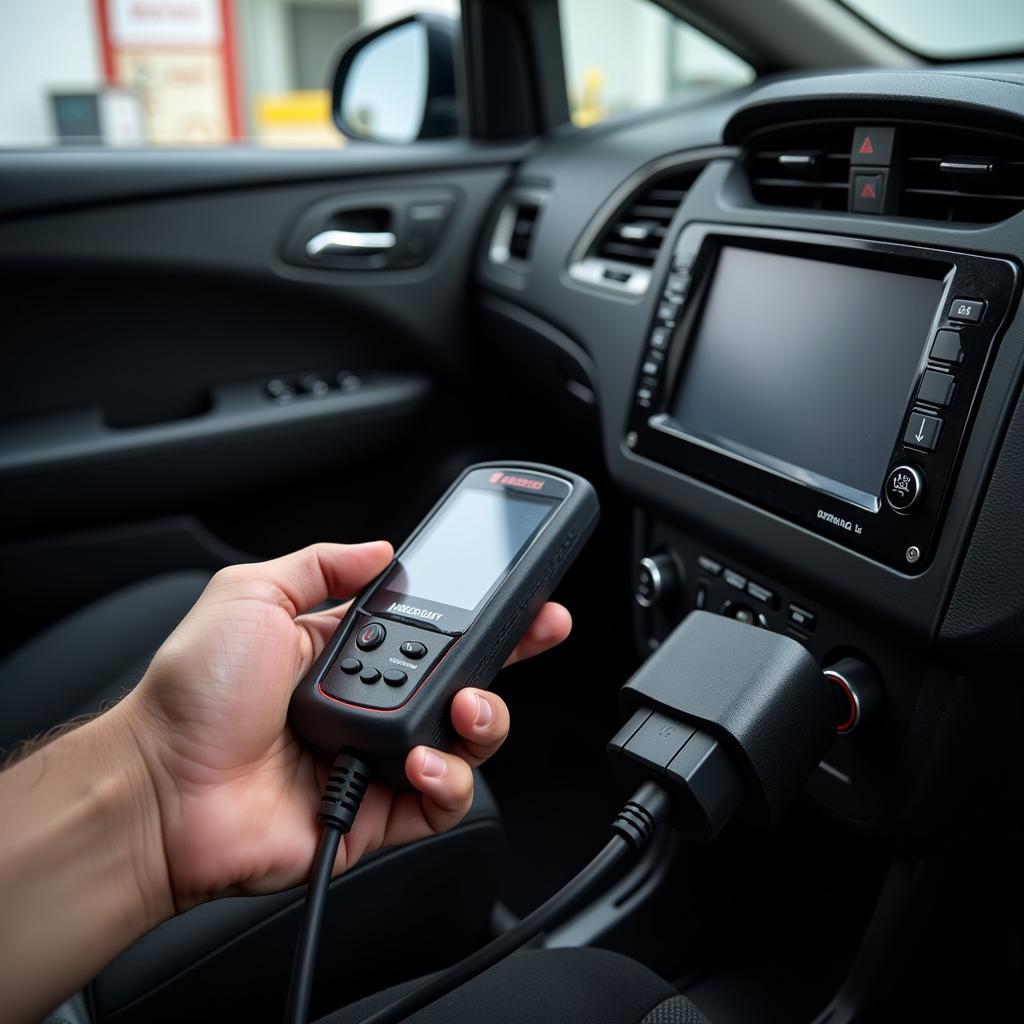
Mechanic Connecting Car Diagnostic Machine to OBD Port
A Car Diagnostic Machine is an essential tool for any car owner or mechanic. It allows you to quickly and easily identify problems with your vehicle, saving you time and money on repairs. Whether you’re a seasoned mechanic or a DIY enthusiast, understanding how these machines work and how to choose the right one can significantly improve your car maintenance experience. Find the perfect best car diagnostic machine for your needs right here.
What is a Car Diagnostic Machine and Why Do You Need One?
A car diagnostic machine, also known as a car scanner or OBD (On-Board Diagnostics) scanner, is an electronic device that connects to your car’s computer system to retrieve diagnostic trouble codes (DTCs). These codes indicate specific issues within various vehicle systems, such as the engine, transmission, ABS, airbags, and more. Having a car diagnostic machine can empower you to take control of your vehicle’s maintenance. Instead of relying solely on a mechanic’s diagnosis, you can gain valuable insights into your car’s health.
Imagine this: your check engine light suddenly illuminates, leaving you wondering what’s wrong. Instead of rushing to a mechanic and potentially facing a hefty bill, you can use a car diagnostic machine to identify the problem yourself. This can save you money on unnecessary repairs and give you the knowledge to make informed decisions about your car’s maintenance.
 Mechanic Connecting Car Diagnostic Machine to OBD Port
Mechanic Connecting Car Diagnostic Machine to OBD Port
Types of Car Diagnostic Machines
There are several types of car diagnostic machines available, each with its own set of features and capabilities. Understanding the differences can help you choose the best one for your needs. The categories range from basic code readers to advanced professional-grade scan tools. Basic code readers are affordable and primarily display DTCs, while more advanced scanners offer live data streaming, bidirectional control, and specialized functions for specific vehicle makes and models.
Choosing the Right Car Diagnostic Machine
Selecting the right car diagnostic machine depends on your specific needs and technical skills. Consider factors like the types of vehicles you work on, your budget, and the features you require. If you primarily work on older vehicles, a basic code reader might suffice. However, for newer cars or more in-depth diagnostics, a more advanced scanner with live data streaming and bidirectional control is recommended. Explore options like a multi car diagnostic machine for versatility.
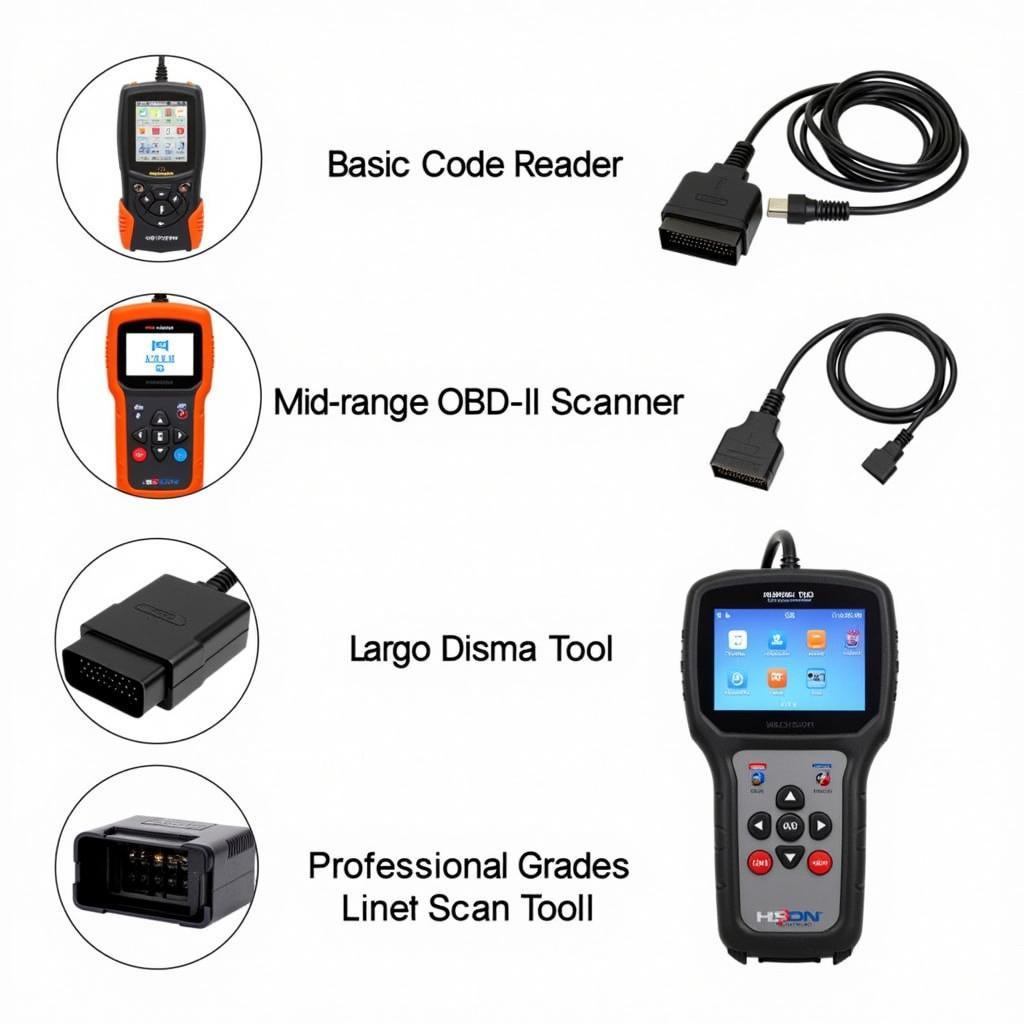 Variety of Car Diagnostic Machines Ranging from Basic to Advanced
Variety of Car Diagnostic Machines Ranging from Basic to Advanced
How to Use a Car Diagnostic Machine
Using a car diagnostic machine is generally straightforward. First, locate the OBD-II port in your vehicle, typically under the dashboard. Then, connect the scanner to the port and turn on the ignition. The scanner will communicate with your car’s computer and retrieve any stored DTCs. You can then use the scanner’s manual or a DTC lookup tool to interpret the codes and determine the underlying issues. For those seeking a portable solution, a car diagnostic machine app paired with a compatible OBD-II adapter might be the perfect fit.
Interpreting Diagnostic Trouble Codes
Once you have retrieved the DTCs, it’s crucial to understand what they mean. Each code corresponds to a specific problem within your vehicle’s systems. Use a reliable DTC lookup tool or consult a repair manual to get a detailed explanation of each code and its potential causes. Remember, a DTC is a starting point for further diagnosis, not a definitive answer. Always conduct thorough inspections and tests to confirm the issue before undertaking any repairs.
Benefits of Using a Car Diagnostic Machine
The advantages of owning a car diagnostic machine extend beyond simple code retrieval. It can empower you to:
- Save money on repairs: Identify problems early and avoid unnecessary trips to the mechanic.
- Gain a deeper understanding of your vehicle: Monitor its performance and identify potential issues before they become major problems.
- Negotiate better repair prices: Armed with knowledge from your diagnostic machine, you can discuss repairs with mechanics from a more informed position.
Conclusion
A car diagnostic machine is a valuable tool for anyone who wants to take control of their vehicle’s maintenance. From basic code readers to advanced scan tools, there’s a car diagnostic machine to fit every need and budget. By understanding the power of these tools and how to use them effectively, you can save money, improve your car’s performance, and become a more informed car owner. So, invest in a tata car diagnostic tool or another suitable option and empower yourself with car diagnostic knowledge.
FAQ
- What is an OBD-II port?
- How much does a car diagnostic machine cost?
- Can I use a car diagnostic machine on any car?
- What are the most common diagnostic trouble codes?
- How do I clear diagnostic trouble codes after a repair?
- Can a car diagnostic machine diagnose all car problems?
- What is the difference between a code reader and a scan tool?
Common Car Diagnostic Scenarios
- Check Engine Light On: This is the most common scenario. A diagnostic machine can help pinpoint the cause, from a loose gas cap to a more serious engine issue.
- Poor Fuel Economy: A diagnostic machine can check for issues affecting fuel efficiency, such as oxygen sensor problems or faulty fuel injectors.
- Transmission Problems: Slipping gears or rough shifting can be diagnosed using a scan tool to identify potential transmission issues.
Further Reading and Resources
For more information on car diagnostic tools and repair guides, explore these resources on our website: obd car diagnostic tool in cape town.
Need Help with Car Diagnostics?
Contact us via WhatsApp: +1(641)206-8880, Email: [email protected]. Our 24/7 customer support team is ready to assist you.


